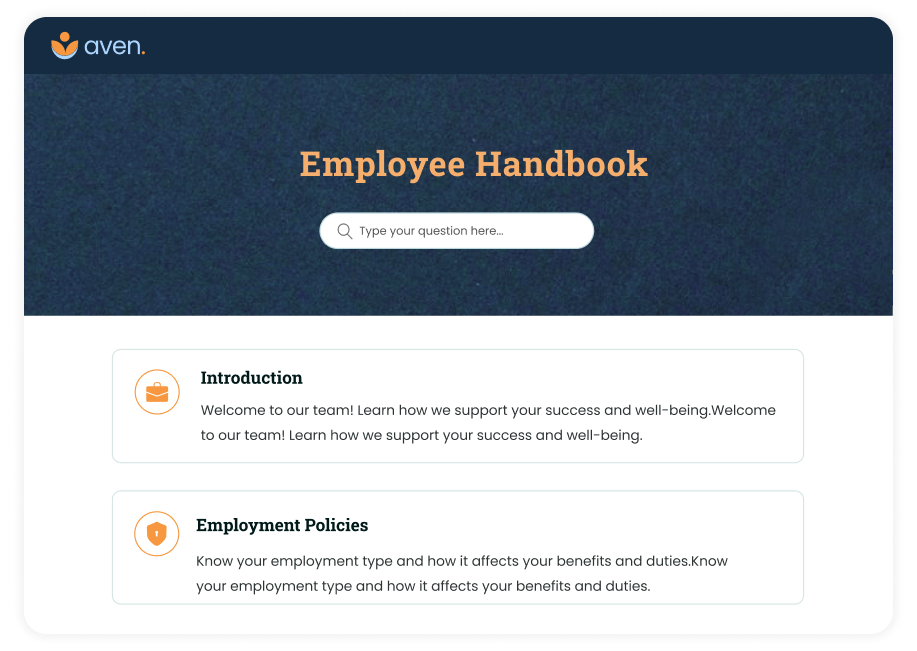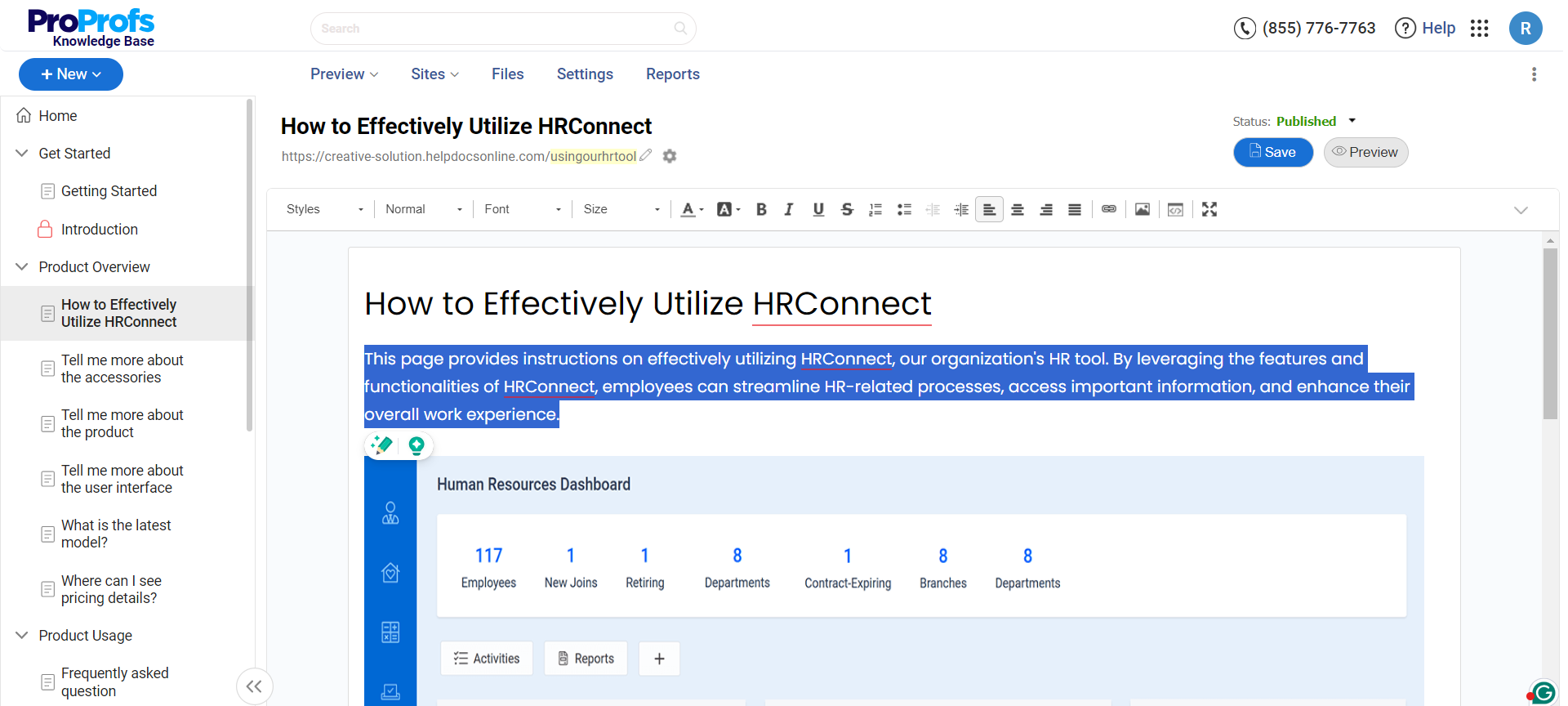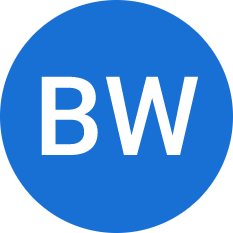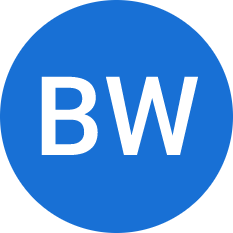Standardized processes are the backbone of any successful organization, but what happens when every employee has their own way of doing things?
Inconsistencies, confusion, and even legal risks become the norm. HR SOPs can save you by bringing order and consistency to all this.
HR SOPs provide step-by-step instructions for various HR processes, from onboarding new hires to conducting performance reviews and handling employee grievances. According to the Society for Human Resource Management (SHRM), organizations with a strong onboarding process improve new hire retention by 82% and productivity by over 70%.
In this guide, we’ll explore the world of HR SOPs, including their types, benefits, and essential elements. We’ll also explore templates and examples to help you create clear and effective SOPs for your HR department.
What Is an SOP in HR?
An HR SOP (Standard Operating Procedure) is a detailed document that outlines the step-by-step processes for various HR functions within an organization. It ensures that HR tasks, such as hiring, onboarding, payroll, performance management, and employee exits, are handled uniformly across the company.
Beyond maintaining order, HR SOPs are crucial in streamlining employee experience and reducing ambiguity in HR processes. They help new HR personnel adapt quickly to their roles, ensure transparency in employee-related decisions, and improve team accountability. Additionally, these SOPs act as a reference point during audits, preventing legal and operational risks.
For example, an HR SOP for employee onboarding would outline the steps HR must follow when hiring a new employee. This may include drafting an offer letter, collecting necessary documents, setting up IT access, scheduling orientation sessions, and assigning mentors.
What Are the 5 Important Types of HR SOPs?
There are different HR SOPs (Standard Operating Procedures) for managing human resources efficiently. Here are those:
Recruitment & Onboarding SOPs
These SOPs define the hiring process from start to finish. They outline how job postings should be created, where to advertise, how resumes should be screened, and the criteria for selecting candidates.
They also include standardized interview procedures, background verification steps, and offer letter templates to ensure fairness and compliance with labor laws.
Onboarding SOPs help HR teams integrate new hires into the organization by outlining training schedules, introducing teams, and providing access to necessary systems. This ensures that new employees are well-prepared and productive from day one.
Employee Management & Development SOPs
These SOPs include processes for setting performance goals, conducting appraisals, and handling promotions or transfers. They also define the steps for training employees through workshops, mentorship programs, or e-learning platforms.
Structured development plans help employees enhance their skills and progress while ensuring managers have a clear roadmap for tracking growth and performance.
Payroll & Compensation SOPs
These SOPs ensure employee salaries, benefits, and tax deductions are processed accurately and on time. These procedures include guidelines on calculating salaries, processing bonuses, handling deductions, and complying with tax regulations.
They also cover employee benefits such as health insurance, retirement plans, and leave policies. By following a standardized payroll process, HR teams can minimize errors, ensure compliance with financial laws, and maintain employee trust.
Employee Conduct & Workplace Policies SOPs
These SOPs define the organization’s workplace behavior, ethics, and professionalism expectations. They outline codes of conduct, dress codes, communication guidelines, and policies on discrimination, harassment, and workplace safety.
They also cover disciplinary procedures, ensuring that any violations of company policies are addressed fairly and consistently. Clear conduct guidelines help maintain a positive work environment, prevent conflicts, and make employees feel safe and respected.
Exit & Offboarding SOPs
These SOPs include steps such as conducting exit interviews, processing final paychecks, revoking system access, and collecting company assets like ID badges or laptops. These procedures help HR maintain compliance, prevent security risks, and gain insights into why employees leave, helping improve retention strategies.
Proper offboarding also ensures that departing employees leave on a positive note, preserving the company’s reputation and relationships.
What Are the Benefits of Creating HR SOPs?
HR Standard Operating Procedures (SOPs) are essential for creating a structured and efficient human resources system. Here are five key benefits of implementing HR SOPs:
Consistency in HR Processes
HR SOPs standardize operations across the organization, ensuring that hiring, payroll processing, and performance evaluations follow the same structured approach.
This consistency helps eliminate bias, ensures fair treatment of employees, and improves operational efficiency by reducing misunderstandings or redundant efforts.
Employees and managers alike benefit from clear guidelines, making decision-making more transparent and predictable.
Regulatory Compliance & Risk Management
HR departments must comply with numerous labor laws, tax regulations, and workplace safety requirements.
A well-documented SOP ensures that HR teams adhere to all legal requirements, reducing the risk of compliance violations, fines, or lawsuits.
It also provides a structured approach to handling employee grievances, disciplinary actions, and data protection, minimizing the organization’s legal risks.
Enhanced Employee Onboarding & Training
New employees often face challenges adjusting to a new work environment. SOPs streamline onboarding by outlining structured training plans, role expectations, and company policies, helping new hires integrate seamlessly.
Additionally, standardized training procedures ensure that all employees receive equal learning opportunities, fostering skill development and professional growth.
Time & Cost Efficiency
By reducing redundancy, automating repetitive tasks, and providing clear workflows, HR SOPs help organizations save valuable time and resources.
Standardized procedures improve task execution speed, reduce manual errors, and minimize the need for constant HR intervention.
As a result, HR teams can focus on strategic initiatives rather than micromanaging routine administrative tasks.
Improved Employee Experience & Engagement
Employees thrive in a structured, transparent, and well-organized work environment. SOPs eliminate confusion around policies such as leave management, performance reviews, and conflict resolution, creating a more employee-friendly workplace.
When employees clearly understand their rights, responsibilities, and career development opportunities, they feel more engaged, motivated, and satisfied.
What Is the Checklist or Format to Create an HR SOP?
Creating an HR SOP requires a structured approach to ensure clarity, efficiency, and compliance across various HR functions. Below is a comprehensive checklist for developing HR SOPs across key functions:
Recruitment & Onboarding
A comprehensive recruitment and onboarding SOP helps streamline hiring, from screening candidates to welcoming new employees. To create an effective SOP:
- Choose knowledge management software to store and update hiring processes
- Choose or create knowledge base templates for recruitment steps, including application screening, interviews, and background checks
- Automate content imports, such as job descriptions, offer letter templates, and onboarding materials
- Define standard onboarding checklists for each job role, including required training sessions and paperwork.
Example: A growing tech company uses an HR SOP to ensure all hiring managers follow the same structured process, reducing delays in candidate selection and improving the new hire experience.
Employee Training & Development
A well-structured SOP for employee training ensures consistent skill development and career growth opportunities. To build this SOP:
- Define a template outlining training objectives, modules, and assessment criteria
- Use an LMS or knowledge base to store training materials and track employee progress
- Automate scheduling for training sessions and feedback collection
- Standardize the evaluation process for training effectiveness and performance improvement.
Example: A customer service company uses a centralized training SOP, ensuring every new agent receives the same product knowledge and communication skills training.
Compensation & Employee Relations
This SOP covers payroll processing, performance-based compensation, and handling workplace conflicts. Steps to create it include:
- Document payroll procedures and integrate them with HR software for automated processing
- Define salary structures and increment policies based on performance benchmarks
- Establish guidelines for handling grievances, conflict resolution, and disciplinary actions
- Ensure compliance with labor laws by maintaining updated policies on leaves, working hours, and benefits.
Example: A global corporation automates its compensation SOP, ensuring timely salary disbursements and transparent performance-based pay adjustments.
Recordkeeping & Data Security
Maintaining employee records and ensuring data security is critical for compliance and HR efficiency. An SOP should include:
- A secure document management system to store and organize HR records
- Defined access controls and security protocols to protect sensitive employee information
- A clear retention policy outlining how long different HR records should be maintained
- Regular security training for employees to prevent data breaches.
Example: A healthcare organization follows a strict recordkeeping SOP to ensure compliance with data protection regulations, safeguarding patient and employee information.
FREE. All Features. FOREVER!
Try our Forever FREE account with all premium features!
What Are Some Examples of HR SOP Templates?
HR SOP templates provide a pre-designed HR SOP format and framework for creating standardized procedures, saving time, and ensuring consistency in HR operations.
ProProfs Knowledge Base

ProProfs Knowledge Base makes it easy to create HR SOPs and other internal knowledge bases. There’s a repository of basic templates to get started, and you can customize your help center with your company branding.
What Are Some Examples of an HR SOP?
Exploring HR SOP examples provides valuable insights into best practices, legal compliance, and efficient workflows, helping you understand how companies approach it:
ProProfs Knowledge Base

ProProfs Knowledge Base uses its own platform to create its HR knowledge base. Its AI-powered WYSIWYG editor has a Word-like interface and built-in prompts to help writers create fast and error-free HR documents or employee handbooks.
It lets you create a Table of Contents, use simple, jargon-free language, and use smart multimedia like dashboard screenshots, charts, and gifs to make the documents more engaging.

Facebook’s employee handbook stands out with its simple, insightful, and beautifully designed approach. By using human-centric design and informal language, it creates a welcoming and engaging experience for new hires, fostering a sense of connection and belonging from day one.
Improve Employee Onboarding & Training with an HR SOP
HR SOPs streamline HR processes, ensuring compliance and fostering a consistent and positive employee experience. We’ve delved into the different types of HR SOPs, their benefits, and the key steps involved in creating effective SOPs, including using templates and real-world examples.
By implementing standardized procedures, HR departments can optimize workflows, reduce errors, and improve efficiency. Well-defined SOPs also contribute to a more transparent and equitable workplace, ensuring all employees are treated fairly and consistently.
ProProfs Knowledge Base enables a user-friendly interface and customizable templates to empower HR teams to develop comprehensive SOPs. It streamlines document creation with an AI-powered text editor that helps you produce error-free content quickly while letting you summarize and improve the current content.
 Tips
Tips
We’d love to hear your tips & suggestions on this article!
FREE. All Features. FOREVER!
Try our Forever FREE account with all premium features!

 We'd love your feedback!
We'd love your feedback! Thanks for your feedback!
Thanks for your feedback!







